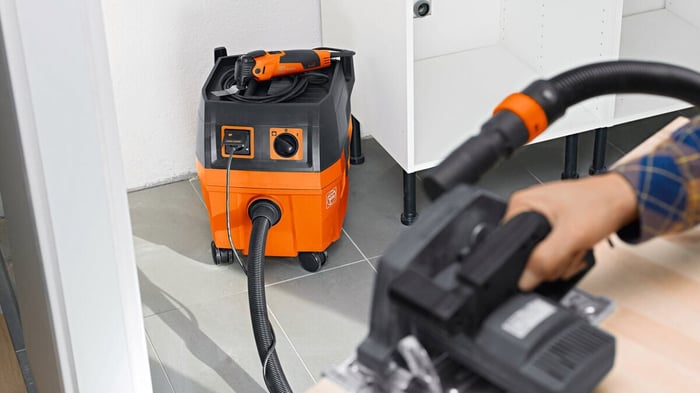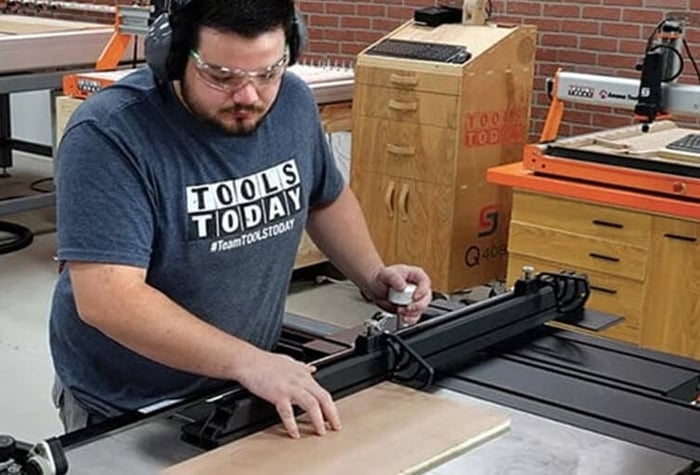
How Does a SawStop Saw Stop?
Are you a woodworker searching for the ultimate safety feature in a table saw? Look no further than the revolutionary SawStop Saw.
In this comprehensive guide, we'll explore the inner workings of the SawStop Saw, including its innovative safety system and the benefits it offers.
From its ability to detect skin contact to the protection it provides against amputations, we'll delve into the intricacies of this game-changing tool. We'll address its limitations, compatibility with different wood types, and how it has transformed the woodworking industry.
If you're curious about alternatives to the SawStop Saw, we've got you covered. Let's dive into the world of the SawStop Saw and discover how it's shaping the future of woodworking safety.
Or, you know; just watch our Hot Dog Test.
Key Takeaways:
- The SawStop saw utilizes a safety system to prevent injuries, making it a popular choice among woodworkers.
- When skin contact is detected, the saw immediately stops the spinning blade, protecting against potential amputations.
- While highly effective, the SawStop saw does have limitations such as not being compatible with very wet wood, or conductive metals like aluminum.
- In the case of green wood or conductive metals, there is a Bypass Mode which will allow normal function of the saw.
What Is a SawStop Saw?
A SawStop saw is an advanced piece of woodworking equipment designed to prioritize user safety and prevent table saw injuries by employing innovative technology.
It incorporates a conductive brake cartridge system that instantly halts the blade if it comes into contact with skin, minimizing the risk of serious lacerations. This technology has revolutionized table saw safety, making it a game-changer for woodworkers of all levels. The blade technology also allows you to cut through various wood types with precision and ease, and the saw can accommodate different dimensions, making it versatile for a wide range of woodworking applications.
How Does a SawStop Saw Work?
The functionality of the saw revolves around its intricate safety system, which is activated by the detection of skin contact with the conductive blade, resulting in the immediate deployment of the brake cartridge to halt the blade's motion.
Once the skin contact is detected, the SawStop saw's safety system triggers a series of rapid events. The electric current through the blade is altered, activating a fast-acting aluminum brake, which stops the rotation almost instantaneously. This mechanism is crucial in preventing serious injuries and can make a significant difference in a potential accident.
The powerful motor greatly contributes to its efficiency. The motor not only drives the blade but also assists in triggering the safety mechanism. The precision-engineered riving knife, another essential component, ensures the ‘pinching’ of the wood and minimizes kickback, enhancing user safety.

What Is the SawStop Safety System?
The safety system is a pioneering technology integrated into the T-Glide Fence assembly, ensuring enhanced user protection and operational versatility across a range of voltage requirements, from 110-120V to 480V.
By incorporating electronic sensors, the system detects contact between the blade and a conductive object (such as skin), enabling the blade to stop within 5 milliseconds, thus preventing serious injuries. This innovative technology has been widely acclaimed for its unmatched safety features, making it an integral component of modern woodworking machinery and earning numerous accolades for its contribution to workplace safety.
One of the standout features of the SawStop system is its compatibility with different voltage specifications, making it adaptable to a variety of operational setups. This adaptability makes it an ideal choice for a wide range of woodworking professionals, from hobbyists to industrial craftsmen, providing peace of mind and ensuring safety regardless of the voltage standards used.
What Are the Benefits of Using a SawStop Saw?
There are numerous advantages, including unparalleled safety features and the availability of diverse models from the Compact Table Saw, the Contractor Saw, and the Professional Cabinet Saw, catering to different woodworking requirements.
SawStop is renowned for its intuitive safety system, featuring a revolutionary brake to stop the blade within milliseconds upon contact with skin, minimizing the risk of severe injuries.
The Jobsite Saw Pro is designed for portability and versatility, ideal for on-the-go woodworking projects without compromising on precision.
Meanwhile, the Contractor Saw is celebrated for its power and durability, equipped with advanced technology to enhance cutting efficiency and accuracy, catering to professional woodworkers' needs.
On the other hand, the Professional Cabinet Saw is revered for its exceptional precision and robust build, making it a preferred choice for intricate woodworking tasks in workshops.

How Does the SawStop Saw Prevent Injuries?
The SawStop saw is engineered to prevent table saw injuries through the innovative safety system which effectively mitigates the risk of severe harm or lacerations during woodworking operations.
The mechanism behind SawStop's injury prevention is truly remarkable, as it utilizes an electronic detection system to instantly react to contact with skin. When it senses the electrical capacitance of human flesh, it triggers the braking system, causing the blade to retract within 5 milliseconds. This rapid response significantly reduces the chances of serious injury by stopping the blade before it can cause major harm.
The safety system is designed to minimize false activations, ensuring that the saw only stops when encountering actual skin contact. This feature adds another layer of reliability to the injury prevention mechanism, instilling confidence in woodworkers and hobbyists alike.
How Does the SawStop Saw Detect Skin Contact?
The SawStop saw detects skin contact through the conductive properties of the blade, activating its safety system based on predefined parameters, including the serial number authentication for seamless identification of the blade's conductive nature.
When a person's skin comes into contact with the conductive blade, the saw's system rapidly assesses the electrical signal resulting from the contact. This process is finely tuned to minimize false activations, only triggering the safety mechanism when certain conductivity thresholds are met.
The serial number validation serves as a crucial step in ensuring that the conductive properties of the blade are accurately recognized. This unique identification process allows for seamless verification of the blade's conductive nature, ensuring that the safety system is always in tune with the specific characteristics of the blade in use.
What Happens When Skin Contact Is Detected?
Upon detection of skin contact, the SawStop safety system triggers the immediate deployment of the brake cartridge, effectively arresting the blade's motion and providing a critical safety layer, particularly beneficial for users wearing gloves during woodworking tasks.
The SawStop saw incorporates advanced electronic sensors that can differentiate between skin and wood, ensuring that accidental contacts result in the swift activation of the safety mechanism. This innovation significantly reduces the risk of severe injuries, as the blade ceases its movement within milliseconds of contact.
How Does the SawStop Saw Protect Against Amputations?
The SawStop saw provides robust protection against amputations by swiftly halting the blade's movement upon detection of potential hazards, with the safety system effectively mitigating severe injuries, irrespective of the breaker size or operational requirements.
The safety mechanism of the SawStop saw operates through an innovative detection system that can rapidly respond to potential dangers, instantly stopping the blade to prevent amputations and reduce the severity of injuries. This feature makes it highly adaptable across different breaker sizes, ensuring consistent protection in various woodworking settings. The versatility of its safety system enables seamless integration with diverse operational requirements, underscoring its reliability and effectiveness in safeguarding users during woodworking tasks.

Are There Limitations to the SawStop Saw?
Despite its advanced safety system, the SawStop saw does have certain limitations, including considerations related to its usage with wet wood and the potential occurrence of false positives, particularly in specific woodworking environments in North America.
Regarding working with wet wood, the SawStop saw's safety technology may not be as effective, raising concerns about its compatibility with such materials. This can pose challenges for users who frequently encounter damp or wet wood in their woodworking projects, especially in regions with high humidity or variable weather conditions.
In this case, as when working with conductive metals like aluminum, woodworkers can implement the Bypass System and use the SawStop as a normal table saw. Bypass Mode will disengage the saw’s safety system’s brake feature, allowing you to cut conductive material.
Also, a red light will flash, indicating that the material is conductive but the Bypass Mode is engaged. If you see no flashing light, the material is not conductive, and you can return to normal operation, without the Bypass Mode.
Does the SawStop Saw Work with All Types of Wood?
The SawStop saw is designed to work effectively with a wide range of wood types, leveraging its safety system to accommodate varying densities and compositions, including those requiring higher power specifications such as 3hp and 5HP.
This adaptability makes the SawStop saw a versatile tool for woodworking projects of different scales and complexities. Whether you are working with softwoods like pine and cedar or hardwoods like oak and maple, this saw's safety features ensure consistent protection, regardless of the wood's density.
Its ability to adjust to different wood types and power requirements showcases its versatility and reliability in diverse woodworking applications.
Can the SawStop Saw Be Used with Wet Wood?
Wet wood poses a unique challenge as the moisture can increase the conductivity of the wood, potentially affecting the precision of the saw's safety mechanism.
The increased moisture content in the wood can trigger false-positive reactions, leading to unnecessary stops or potentially desensitizing the safety system.
This becomes particularly crucial when dealing with higher power specifications, as the force and speed of the blade require a precise and reliable safety mechanism to prevent accidents. It's essential for users to be attentive to the operational considerations to ensure that the SawStop saw's safety features remain efficient and reliable even when working with wet wood.
When in doubt, do a test cut in Bypass Mode to see if you get a red flashing light, which would indicate that the wood is too green for the system to function properly.
Frequently Asked Questions
How does the SawStop saw stop?
The saw stops by using a unique safety feature that detects contact between skin and the blade, causing the blade to stop and retract within milliseconds to prevent injury.
What is the safety feature of a SawStop saw?
The main safety feature is an electronic detection system that senses when skin comes into contact with the blade, triggering the brake to stop the blade and prevent injury.
How does the electronic detection system of a SawStop saw work?
The electronic detection system works by sending a low voltage electrical signal through the blade. When skin comes into contact with the blade, the signal changes and triggers the brake to stop the blade within 5 milliseconds.
What happens after the SawStop saw stops the blade?
After the saw stops the blade, it retracts into the table and a brake cartridge is deployed to stop the blade's rotation. This prevents further injury and allows the user to safely remove their hand from the blade.
After the system is deployed, you must replace the brake cartridge. You should also carefully inspect the saw blade for damaged or broken teeth, and replace the blade if needed.

Can I use any saw blade in the SawStop saw?
The SawStop accepts any standard steel 10" saw blade, including those with an Electro-Blu coating, as the coating does not cover the cutting edge of the teeth.
It will also accept 8" stacked dado sets up to 29/32".
Can I use work gloves when using SawStop?
If you trigger the system while wearing gloves, the saw will cut through your gloves, but stop when it encounters your skin, thus preventing injury.
In very rare cases, the blade could get caught on your glove and pull your hand into the spinning blade before the system has a chance to fully stop the blade.
For this reason, wearing gloves while operating a SawStop saw is not recommended.
Does the SawStop saw's safety feature affect the saw's performance?
No, the safety feature of the SawStop saw does not affect its performance. The detection system only activates when skin comes into contact with the blade, so it will not interfere with regular cutting operations.
How reliable is the SawStop saw's safety feature?
The SawStop saw's safety feature is extremely reliable, with a 99% effectiveness rate. It has been independently tested and proven to stop the blade and prevent serious injuries in the event of accidental contact with the blade.





